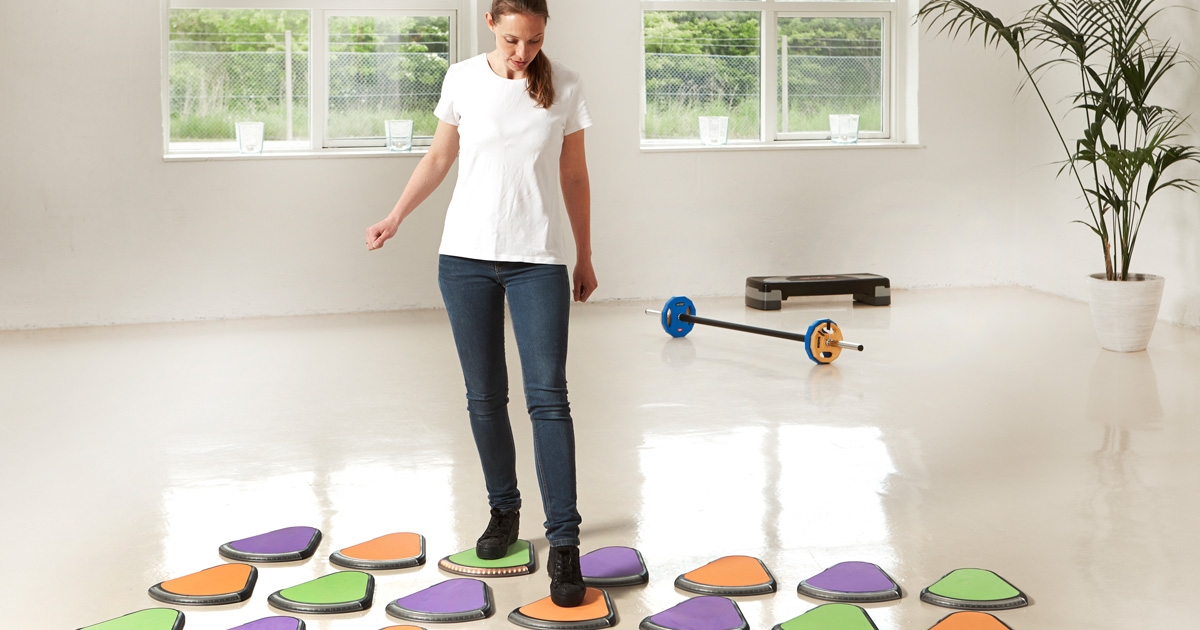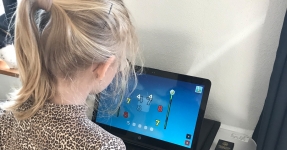What are Treax Pads?

The coloured Treax Pads make up a training system that was originally developed for people with neurological difficulties. Later we have found that the pads give good results for many different users.
Treax Pads are part of a technological training tool that can be used by many different people with many different needs. Treax Pads contain the pad system that can be used for training of coordination, balance and reactivity. They are versatile and can be used on the floor or mounted on a wall, so that the user can choose to train either arms or legs.
Treax Pads were developed especially for persons in rehabilitation after acquired brain injury, elderly who need motor training, and children who need to train coordination. But it has also been found that people with many other difficulties can benefit from Treax Pads.
The idea
INNOVAID developed Treax Pads together with therapists at Hammel Neurorehabilitation and Research Centre and a design student. The original idea behind Treax Pads was to create a training tool for neurorehabilitation. The aim was also to create a tool that was widely applicable as an aid to physiotherapists. Here the pads were intended for rehabilitation after acquired brain injury, but they were later seen to be applicable to many different target groups.
Today Treax Pads are also used in many senior centres as activity technology, and they are also used by children and adolescents to train coordination and reactivity. Depending on how many Treax Pads are available, they can also be used as a social game, where, for example, two persons compete with each other. This makes training more fun and motivating.
Different functions
With the Random function, coordination, balance and reactivity can be trained. With a random light signal, the pads will display a purple, green or orange light. The user must then activate the right pad with the right colour. This trains the user’s attention and ability to coordinate visual input with movement. The physiotherapist or other therapist can adjust the pads so that they fit the individual user.
With the Reaction function, focus is on quick reactions. The pads can be adjusted so that they react randomly in different intervals. The number of seconds they light before the light goes out again can also be adjusted. The pads display red or blue lights, and for a more challenging activity you can make different rules that apply to the colours. For example, by turning off the red lights with right hand/foot and the blue lights with left hand/foot. Here the user needs to think quickly and react promptly.
The force indication scale responds to weight. This function can be used after hip surgery, for example, when the user needs to practice putting the right amount of weight on each leg. Or it can be used by a person with a one-sided paralysis. The pads are adjusted according to a specific weight, and they give visual feedback as to how much weight is placed on each leg.
In the balance function, a blue light lights up at the top of the pads when the weight of the sole of the foot shifts. If there is good balance between the heel and forefoot, the pads will display a white light instead of blue. This function can be used to train balance and body awareness.
Treax Pads are technology for therapists who want a specific, effective training tool that is meaningful for its users. The direct feedback makes it easier for the user to see tangible results of his/her training. And the possibility for competition and social games makes training more fun and motivating.
You can read more here (http://www.iaid.dk/da/treax-pads), where you can also find inspiring video clips with different exercises.





mail@iaid.dk T:+45 86 78 99 33